- Information Security
- Business Continuity
- BT Management
- IT Service Management
- Authorized Economic Operator
- ISO 9001 Quality Management System
- Project Management
Information Security
Keep your information assets secure, keep your future secure…Information is the heart of your company. If your information assets are well protected you can rely on your company’s long lifespan.
To make rapidly changing technology a friend of yours, keep your fortune valued information investments safe in a flawless management system.
Is your staff has enough conscious about information security? Do you feel ready for future threats to come?
If your answers for these two questions are “no” or you have second thoughts; just keep walking on a path as same as ours.
We are ready to be with you for determining your IS weaknesses and design not only your infrastructure but your corporate processes as well, based on a complete IS approach.
Our consultants, who are experts on their fields such as Forensics, Pentest, PCI DSS etc. for successful adaptation exercises of ISO 27001 ISMS and related requirements, will provide the development of an standard proper IS understanding throughout your company
Having an ISO 27001 certificate became mandatory as January 2013 dated regulation about “Simplifying Customs Processes”.
A bullet proof ISMS for targeted attacks
Cyber-attacks are no more in an conventional ways or aims. Companies are now have to operate a bullet proof ISMS in order to keep their information as their most vital asset.So you have to be sure that you are keeping a well-functioning ISMS built by experienced consultants, not wasting any unnecessary investments for useless hardware, software and process development efforts.
As BTYS we provide you pentests and ISMS consulting services developed on ISO 27001 in order to keep your company information assets safe. With a well running standardized ISMS to build your future success on it.
Information security while mobile!
Different work approaches reveals different IS needs. You have to keep the pace to this rapidly changing working approaches and be sure your ISMS is keeping itself updated as well.We include mobile working processes and devices into the ISO 27001 scope with our Bring your Own Device (BTOD) approach. Therefore your information assets will be kept in safe even on employee mobile devices or common used printers and the integrity of your mobile created and transferred information will be sustained.
ISO 27001 Certification Phases
· Creating ISMS project plan
· Defining ISMS policy scope
· Defining information assets and values
· Defining IS threats, security risks and their effects
· Choosing the appropriate IS controls
· Identifying control objectives
· Creating, implementing and managing the necessary policies, standards, processes
· Forming the ISMS management board, team and organizations.
· Defining ISMS certification needs
· Managing the certification process.
Consultancy areas
ISO 27001 ISMS
Penetration tests
Security evaluations
PCI DSS / Visa PIN Security Consultancy
Vulnerability Management
Network Anomaly Analysis
Application Security Tests
Web Application Security Tests
UNIX/Linux Hardening
Load Tests
Trainings
ISO 27001 Awareness
PCI DSS Awareness
Secure Software Development
Penetration Test Techniques
Network Security Test Techniques
Services
ISO27001 (ISMS)ISO 27001 is the global IS standard. It provides defining and operating the necessary processes in order to keep commercial sustainability. ISO 27001 complying companies will have and operate the management capabilities for avoiding loss of information to the unauthorized parties. This standard will provide a reliable and reputable company image on information security manner to the operated markets. Our ISO 27001 consultancy services will support you throughout the whole certification journey from defining the strategy and processes to operating and reporting. For an effective ISMS the processes should be well designed and detailed structured. As BTYS, our experienced and competent consultants will deeply evaluate your work, departments and processes in order to define your customized IS weaknesses and threats and based on this evaluation we’ll ease your effort for creating the adequate IS processes. So together we will keep your company to a IS global standard comply level.
PCI DSS
The industry accepted PCI DSS (Payment Card Industry Data Security Standard) focuses on setting the fundamental IS criteria for card payment systems by mostly keeping the card holders’ information safe. Our PCI DSS consultancy service includes the necessities of this standard such as designing and maintaining a secure network, keeping the card holder information only for access of authorized and secure systems, identifying the complete system weaknesses and managing the efforts to invalidate them, keeping the access controls, network monitoring, and companywide complying to IS by operating related procedures. By our expert consultants we’ll provide you a flawless service from scratch to have and maintain the PCI DSS necessities.
Risk Management
As BTYS we provide you a logical, technical, managerial and physical weakness analysis on your information assets. Our multi aspect risk analysis will create your inventory of information assets and classify them based on your business objectives.
Forensic Analysis Our consultants can investigate and contribute for solution of any IS breach by tracing malice practices, defining unauthorized access logs, creating the digital fingerprints in order to support any necessary legal actions. We’ll create a best suitable solution from an alternative range to support your efforts for forensic processes.
Penetration Tests We measure your IS controls’ success and efficiency by executing our penetration test scenarios. The test scope is to determine the existence of any risks which can cause you information assets will be compromised. Based on the result of this test we will provide you a path for developing your existing IS controls. Our detailed test report will make it easier for you to pursuit your fragile IS points.
Business Continuity
What is Business Continuity?Business Continuity is a management system that aims to ensure the continuity of an organization's critical business processes in case of any interruption or disaster, regardless of its type and reason, and to make it work again as soon as possible with minimum loss.
Purpose;
*To ensure that commercial transactions are not interrupted,
* To prevent market and customer loss,
*To eliminate vulnerabilities against financial loss risks.
A business continuity plan is of great importance in regulating an organization's normal daily operations as well as emergencies and emergencies.
Why Business Continuity?
* If a disaster occurs, the plan may not be needed again.
* It enables the enterprise to continue producing, selling, distributing, in short, providing services.
* The guidelines to be followed by critical business units in order to continue their work in emergency and extraordinary situations are determined.
* Minimizing the number of urgent decisions to be made at the time of interruption helps to prevent interpretation.
* Supports the preparations for legal regulations and inspections.
* It is beneficial in the integration of new procedure and process development requirements of business units into the real life environment.
ISO Standards – Social Security
Published Standards* ISO 22300:2012, Societal security – Terminology
* ISO 22311, Societal security – Video-surveillance – Export interoperability
* ISO/TR 22312:2011, Societal security – Technological capabilities
* ISO 22313, Societal security – Business continuity management systems – Guidance
* ISO 22320:2011, Societal security – Emergency management – Requirements for incident response
* ISO/PAS 22399:2007, Societal security – Guideline for incident preparedness and operational continuity management
Standards in Preparation
* ISO 22315, Societal security – Mass evacuation
* ISO 22322, Societal security – Emergency management – Public warning
* ISO 22323, Organizational resilience management systems – Requirements with guidance for use
* ISO 22325, Societal security – Guidelines for emergency capability assessment for organizations
* ISO 22351, Societal security – Emergency management – Shared situation awareness
* ISO 22397, Societal security – Public Private Partnership – Guidelines to set up partnership agreements
* ISO 22398, Societal security – Guidelines for exercises and testing
* ISO 22324, Societal security – Emergency management – Color-coded alert
IT Continuity Standards
* ISO/IEC 27031:2011, Information technology -- Security techniques -- Guidelines for information and communication technology readiness for business continuity
* ISO/IEC 24762:2008, Information technology -- Security techniques -- Guidelines for information and communications technology disaster recovery services
Business Continuity Fundamental Approach
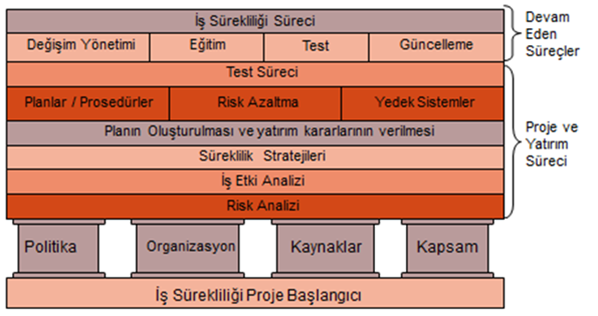
* Scope
Management of business continuity planning in compliance with the ISO 22301 standard
* Entries
Interviews with process owners
Asset inventory
Policies
Procedures
Processes
* Outputs
Analysis reports
Business continuity plan
Emergency (Disaster recovery) plan
Basic Steps When Setting Up a Business Continuity Management System
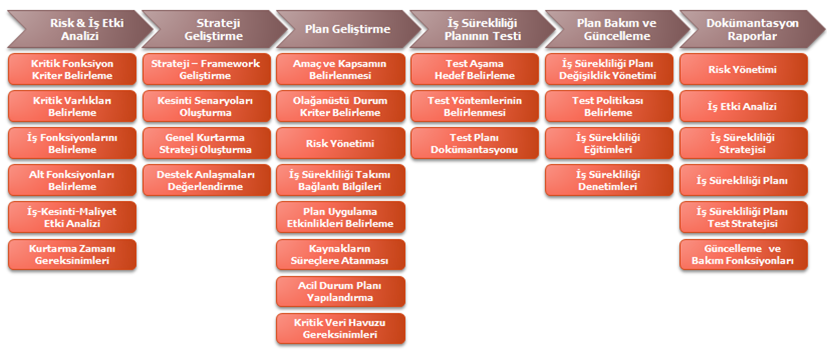
Basic Approach to Establishing Business Continuity
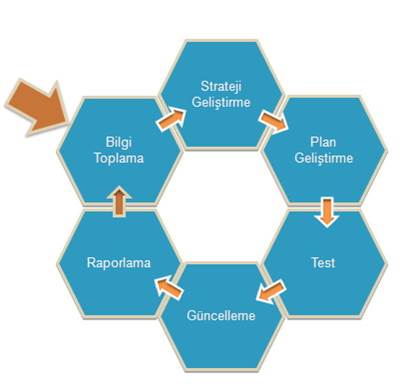
* Examining processes
* Asset inventory
* Business impact analysis
* Determination of recovery priorities
* Risk analysis
* Environmental impact analysis
* Technology and infrastructure recommendations for archiving, backup and storage
* Preparation of business continuity policy/procedure/instructions and forms
* Preparation of disaster recovery plans, policies and procedures
* Preparation of return plans and instructions
* Giving trainings
* Performing tests and exercises
* Compliance with ISO 22301 standard
IT Governance
Be aware, live long!A proactive IT function that recognizes the risks and governance removes the obstacles that degrade the performance of your organization, runs success safely.
GRC (Governance, Risk and Compliance) is an effective IT approach across the world. This approach, which envisages an IT operation that is transparent, accountable, and weighing the risks, assists institutions to perform their performance correctly and supports risk-based controls throughout their processes. We, as BT, are able to establish the relationship of risk and compliance, so that you can direct your units within your organization to work efficiently and standardize the GRC approach.
ISO 38500
ISO 38500 is the fundamental of IT governance and enables IT to measure the enterprise's business contribution. This standard makes it easier for IT departments to place themselves in the corporate framework. This allows IT managers to make the greatest possible contribution to the organization's overall business processes, rather than dealing with details. At the end of the compliance process, managers can better compute the risks and make more accurate decisions in critical situations.
By performing risk analysis of your information assets with risk management; we identify technical, administrative and physical deficits. For this reason, our specialists work on multi-dimensional risk analysis studies to uncover the inventory of all your information assets and to evaluate these assets according to their business objectives. We provide you to see and govern the risks safely.
Project management
One of the important services under Governance Consultancy is project management. Our goal at this point is to improve the project management capability required for your institution to succeed. We can help you with your project at various stages of project management such as Determination of the project target, creating road map, making resource / time management, reporting necessary during the project and manage existing projects directly if necessary.
SOX (Sarbanes Oxley)
SOX Sarbanes Oxley which was passed on July 29, 2002 in the US, is a law known as 'investor protection law' for publicly traded corporations. It deals with the financial reporting of companies operating abroad.
According to this law, it is necessary to determine the risks in the financial reporting of publicly traded companies and to evaluate the risks, and managers are directly responsible for these controls. The aim is to prevent any mistake or malicious attempt on the accounting side, which may result in the disadvantage of the small investor.
We, as BT, offer end-to-end solutions for organizations that need a SOX-compliant financial reporting system. At the end of the journey starting with the design of the financial business processes, we identify the risks in the reporting and establish a new reporting management and monitoring system.
Services
GRC / ISO 38500 Compliance Consultancy
Risk Management Consultancy
Project Management Consultancy
Cobit Compliance Consultancy
SOX Compliance Consultancy
CobIT
IT Service Management
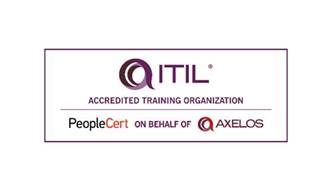
Have an IT department at international standards with our Service Management service, which covers ITIL® and ISO 20000 compliance processes.
The changing needs of the day have complicated IT services. Both in-house IT units and independent IT companies need easy, fast and efficient management systems. Beyond easy management, it is necessary to increase quality by reducing service times. Only in this way, institutions can gain momentum by using technology efficiently and transferring their power to work.
What is needed in an ideal IT Service Management; It is constant renewal, change and harmony. ITIL®, which was created by bringing together the experience of professionals for more than 20 years in the world, is one of the most important sources that sheds light on IT units in this sense. On the other hand, ISO 20000 is at the forefront as the most important standard to be followed in order to bring IT services to the international level.
We, as IT, enable you to reduce IT service times and enable you to play an active role in projects that increase your service quality. We are with you in designing and implementing service processes in accordance with international standards.
ITIL® (ITIL® 2011 Edition)
All components of IT require different expertise, and many of these components work integrated with each other. Therefore, it is impossible to manage them individually. In today's IT world, the most critical rule for the uninterrupted and trouble-free operation of services is to manage them within a life cycle. At this point, 'ITIL®' refers to the whole processes used by information processing units while managing IT services. These processes are created by independent consultants and IT staff. ITIL® is the basis for ISO 20000 certification, which is used by thousands of institutions around the world.
As BT, we aim to achieve the perfect harmony between your IT services and business processes in the services we offer within the scope of consultancy. At this point, while working towards the adoption of tactical and strategic approaches, we also provide the necessary technological infrastructure to provide high quality, consistent and predictable services.
ISO 20000 Service Management System (SYS)
With this service, we ensure that the service/service provider institutions/units have a Service Management System (SYS) in compliance with the ISO 20000 standard. We aim to fully meet your needs in the design, delivery, transformation and improvement processes of the service. The dynamic service management we have achieved at the end of the harmonization process with our experienced staff becomes a system that renews itself with continuous development and improvement studies.
PEOPLECERT Certified ITIL® Foundation Training
Our trainings aiming to introduce the ITIL® processes, explain the requirements for the processes and enable the participants to manage the IT Service Management Processes in their institutions in accordance with ITIL® are PEOPLECERT certified.
If you wish, you can take the ITIL® Foundation exam with the internationally valid PEOPLECERT certificate and get the PEOPLECERT certificate.
ITIL® 2011 Edition
ITIL® V3 (Information Technologies Infrastructure Library), whose last update was made in 2007, was updated on 29 July 2011 and named ITIL® 2011 Edition. The main purpose of this ITIL® update is; Consideration of comments and suggestions from the Change Control Log, which has been put together to ensure continuous development and improvement of ITIL®. The Change Advisory Board (CAB), appointed by the UK public institution Government Trade Office (OGC), in order to address the recommendations collected from the Change Control Log in more detail and to include the changes to be made on ITIL® in a healthy and precise way, He described how the impact on ITIL® would be, and the 2011 Edition was born. With the release of ITIL® 2011 Edition, ITIL® V1 became obsolete. ITIL® V2, on the other hand, started to be phased out rapidly. For this reason, it has been decided that ITIL® publications will no longer be referred to with version information.
ISO 20000 Service Management System Internal Auditor Training Scope:
IT Service management basic definitions and concepts
Service Desk Process
Incident and Demand Management Process
Problem Management Process
Configuration Management Process
Change Management Process
Release and Dissemination Management Process
Capacity Management Process
Financial Management Process of IT Services
Accessibility Management Process
Service Level Management Process
IT Service Continuity Management Process
Information Security Management Process
Business Relations and Supplier Relationship Management Process
Examination Training
Audit Planning (hands-on)
Preparation of Examination Question List (applied)
Audit Practice Principles
Inspection Reporting and Follow-up (Applied)
Auditor Exam (2 hours on the last day)
Services
ITIL® and ISO 20000 Awareness TrainingITIL® and ISO 20000 Implementation Training Services
ITIL® and ISO 20000 Internal Audit Services
Consulting
ITIL® and ISO 20000 Process ConsultingITIL® and ISO 20000 Certification Consulting
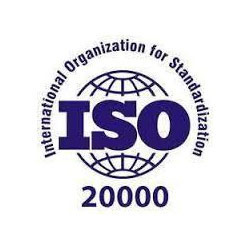
|
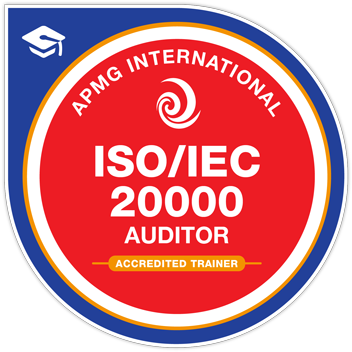
|
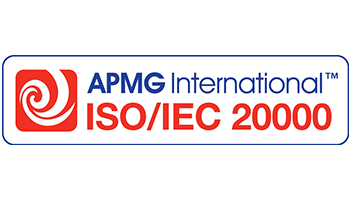
|
Authorized Economic Operator
IT Management Systems guides you in expressing clearly and clearly the application criteria that you meet the requirements of the Authorized Liability Status, giving you ideas and direction regarding the unmet conditions.Let's not forget that this status is an indication that the company works safely and systematically, and it is a road map for the missing points...
Our consultancy service;
* Determining the points of the company's current situation that do not overlap with the conditions
* To guide the preparation of the application forms
* It consists of giving direction and making suggestions about unsatisfactory issues.
YYS - AUTHORIZED LIABILITY CERTIFICATE
AEO - Authorized Economic Operator
WHAT IS AUTHORIZED OBLIGATION STATUS?Authorized obliged party is an international status that provides certain conveniences and privileges in customs procedures to reliable companies that fulfill their customs obligations, have a regular and traceable registration system, have financial adequacy, safety and security standards, and can perform self-control.
The facilities provided and to be provided by YYS;
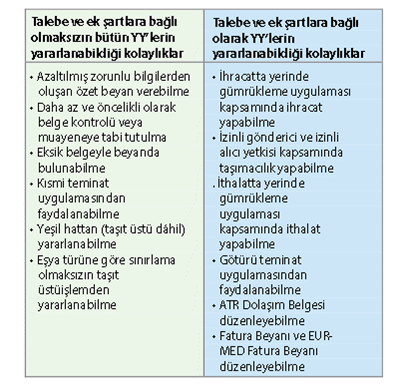
Facilitation of Simplified Procedures:
• On-site customs clearance in export (to carry out transactions from their own facilities without presenting the export goods to the export customs administration),
• Permitted consignor (able to ship the transit goods from their own facilities without presenting them to the customs office of departure)
* On-site customs clearance in import (to carry out transactions from their own facilities without presenting the import goods to the import customs administration)
• Permitted consignee (able to ship the transit goods to their own facilities without presenting them to the customs office of destination),
• Ability to provide a predetermined amount of indefinite and non-reduced collateral within the scope of lump-sum collateral application instead of separate collateral for each transaction in secured transactions
• Ability to provide partial collateral in secured transactions
• Ability to issue A.TR circulation certificate without the need for approval by chambers and visa procedures by customs directorates
• Ability to issue Invoice Statement and EUR.MED Invoice Statement regardless of the value of the goods
• Ability to make a statement with missing documents
• Benefiting from on-board processing without limitation according to the type of goods
• Combination of missing documents and declaration and on-board process ease
• Ability to submit an analysis report taken up to 6 months before the import of the goods determined by the Customs Regulation
• Receiving the goods determined by the Customs Regulation without the analysis results
• Receiving oil and derivatives for which bill of lading cannot be submitted before submission of bill of lading
• To be able to benefit from different regulations to be made by the Ministry regarding the determination of goods.
The important benefit area of YYS is the green line application...
Green Line: It is the line where there is no document or physical control. While applying to the customs administration for the Blue Line, line inquiries can be made directly through the Bilge System and transactions can be completed without physically applying to the customs administration for the Green Line.
The declaration and its annexes, which are processed within the scope of the Green Line, will be kept in the companies to be available for later controls, before being delivered to the customs administration.
The processing time of the declarations processed within the scope of the Green Line is minimized.
For other On-Demand facilities, it is necessary to have YYS first;
On-Site Customs Clearance in Export
Authorized Buyer
Authorized Sender
On-Site Customs Clearance
Benefiting from the lump sum collateral application
Ability to issue ATR Circulation Document
Ability to issue Invoice Statement and EUR-MED Invoice Statement
WHAT CONDITIONS ARE CONSIDERED WHEN ISSUING THE AUTHORIZED OBLIGATION CERTIFICATE?
There are 4 basic conditions sought for applicants who want to be authorized obliged parties:
• Reliability Condition
• Reliability and Traceability of Commercial Records
• Financial Adequacy
• Safety and Security Condition
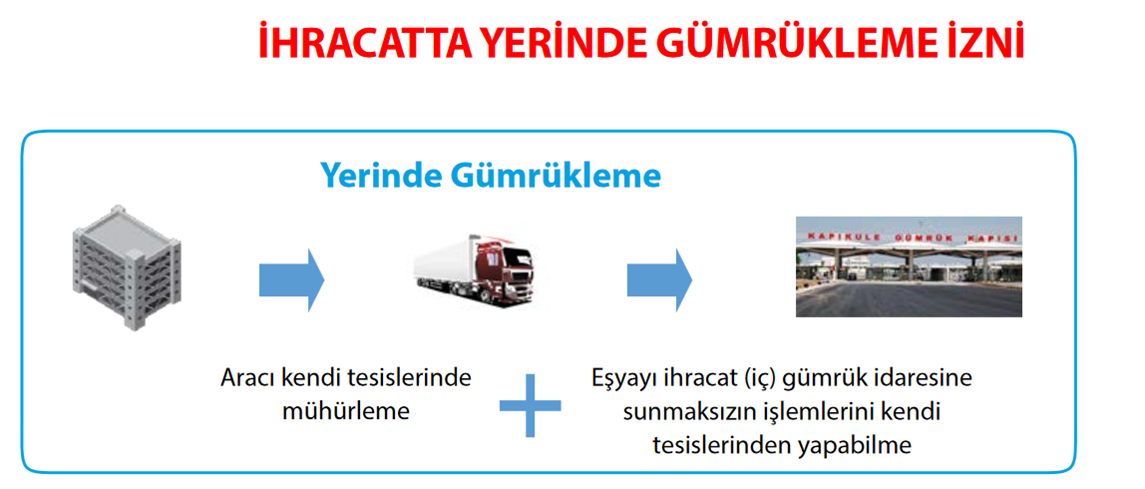
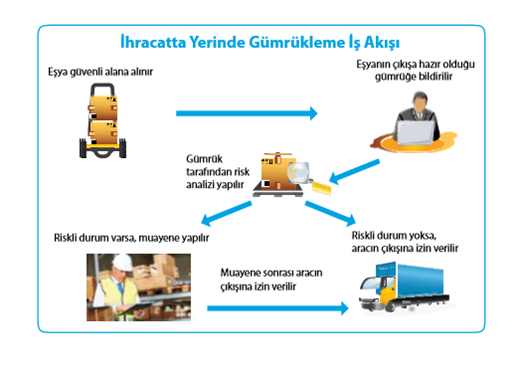
WHAT DOCUMENTS ARE REQUIRED DURING THE APPLICATION?
• Application Form
• Questionnaire
• Criminal record documents/declaration forms
• No debt documents (Note that there is no tax debt and SGK premium debt)
• YMM Report showing the financial situation
• ISO 9001 and ISO 27001 Certificates
WHAT CHARACTERISTICS SHOULD ISO DOCUMENTS HAVE? ISO 9001 and ISO 27001 Certificates to be added to the application by the applicant;
• It should be issued by conformity assessment bodies accredited by accreditation bodies (eg Turkish Accreditation Agency in Turkey) that have signed mutual recognition agreements of the European Accreditation Union.
• It should bear the brand of the accreditation institution.
• It must be up to date. It should be (ISO 9001:2008 and ISO 27001: 2013, arranged according to the latest revised standard series).
ISO 9001 certificate;
It should cover the foreign trade, customs clearance, management and administrative organization activities of the applicant and the transactions related to these activities and the production and service provision related to them.
ISO 27001 certificate;
It should cover the applicant's customs and foreign trade transactions such as import, export, transit, customs clearance and the electronic information assets of activities such as logistics, storage, accounting, finance and information processing related to these transactions, and the information security used to protect these assets.
WHICH COUNTRIES IN THE WORLD HAVE YY /AEO IMPLEMENTATION?
Member States of the European Union and the United States, Argentina, Algeria, China and Hong Kong, Dominican Republic, Guatemala, India, Israel, Switzerland, Canada, Kenya, Colombia, Korea, Costa Rica, Malaysia, Mexico, Norway, Peru, There are authorized operators in 53 countries including Singapore, Uganda, Jordan, Thailand, New Zealand and Zambia. There are 13,885 authorized obliged parties* in the European Union, more than half of them operate in Germany and the rest operate in member countries, primarily the Netherlands and France.
On the other hand, there are approximately 10,693 thousand authorized obliged parties in the USA, 533 in South Korea and 518 in Japan.
*Figures are from Compendium of Authorized Economic Operator (AEO) Programs 2014 study.
WHY IS AUTHORIZED OBLIGATION IMPORTANT IN THE INTERNATIONAL ARENA?
After the September 11 attacks, the question of how to balance between ensuring security at border crossings and international trade and facilitating trade came to the fore. After the negotiations for the solution of the problem, the concept of authorized obliged parties was developed.
The main purpose of this is to create secure supply chains. Because each link of the chain, from the initial point of departure (the facility where the container is filled) to the final destination (the facility where the container is unloaded), will be deemed safe, even under different authorized operator programs. This will greatly accelerate and facilitate international trade. At the same time, it will ensure the safe conduct of international trade.
What is ISO 9001 Quality Management System?
ISO 9001:2015 Quality Management System helps organizations that want to produce the product/service that meets customer expectations and, more importantly, to create competitive advantage by ensuring its continuity.The first version of ISO 9001:2015 Quality Management System Standard was published in 1987, and since that date, it has become the most popular and applied international standard in the world.
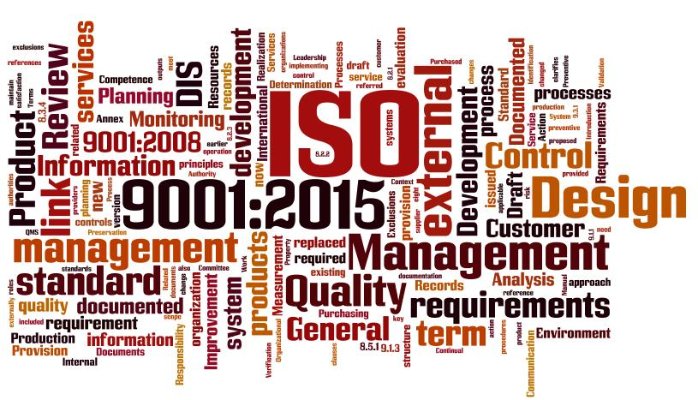
Why should ISO 9001 Quality Management System be established?
ISO 9001 Management System; most of the time, it is requested by the customer or established for the purpose of entering tenders. Installing this system for these purposes will give you a market advantage. However, this benefit is short-term.In the long run:
• ISO 9001 Management System brings a sense of continuous improvement and discipline to your organization apart from its market advantage.
• The establishment of the ISO 9001 Management System does not mean that you have achieved perfection. In the ISO 9001 Management System, every problem is seen as an opportunity for improvement.
• More important than solving the problem in the ISO 9001 quality management system is to ensure that it does not happen again.
The main purpose of ISO 9001 Quality Management System is;
• To facilitate the international exchange of goods and services with ISO standards.
• To develop standardization in the world in order to ensure mutual agreements in scientific, technical and economic fields with ISO 9001 Standards.
• To harmonize, unify and make recommendations to national standards.
• To establish international standards with the approval of all members.
• To support the development of new standards that meet the conditions suitable for national and international use.
• To exchange information on the work of national and technical committees.
• To cooperate with other international organizations related to standardization, to carry out standardization studies that will facilitate the work of these organizations.
At the Same Time;
• It provides better management of the organization.
• It enables employees to be partners in quality.
• It ensures better perception of customer expectations and increases their satisfaction.
• It reduces the losses caused by poor quality.
• It creates an infrastructure for continuous improvement.
• It ensures the continuity of product quality.
• Provides monitoring and control of activities affecting the customer.
• It increases the internal communication of the organization.
• It is an important step towards institutionalization.
• It increases the sense of trust in customers.
• It provides acceptance at national and international level.
• Increases competitiveness.
ISO 9001:2015 QUALITY MANAGEMENT SYSTEM INSTALLATION STAGES
1 – Determination of Current SituationIt would be an appropriate start to examine and identify a functioning working system of your organization, to determine appropriate aspects and to form the basis for the quality management system to be established. Current situation determination is important in order to carry out a boutique study suitable for the organization.
2 – Quality Management System Formation Plan
In order to use the time and power of the team that will organize the quality system activities and the other units that will support this team in the most effective way, it is the stage of determining the issues to be handled and responsible and putting it into a timetable. This plan is reviewed periodically and updated if necessary.
3 – Education
The quality management system is first introduced to key employees at appropriate levels. In this way, your existing resources (trainer, trainee and related costs) are used effectively and the organization is not bogged down in unnecessary details.
4 – Establishment of Quality Management System
A quality management system is not something one person or one department implements. For this reason, it will not be enough for one person to perform a part during the installation phases. The basic principle should be to ensure as much participation as possible while establishing the quality management system. Practical application on this topic is usually to form work teams according to the size of the organization. These teams will take an active role in the establishment and creation of their relevant units, systems / documentation. It is not the right approach for the consultant or just the quality manager to dictate the system.
5 – Performing Internal Audits
After the decision is made that the formation of the quality management system has been completed, internal audits are carried out to check whether the sub-systems work as planned, their compatibility with each other, and their effectiveness. The non-conformities / areas open to improvement identified here are handled within a plan
6 – Review
Quality management system with meetings attended by senior management; The effectiveness and continuity of the system is ensured by reviewing internal audits, targets, corrective/preventive actions, processes and their performance, customer complaints and satisfaction, improvement studies, resource needs.
7 – Preparation for Independent Audit
Support is provided during the selection of the audit firm, planning of audit dates and during the audit. Negative results that may arise from poor expression of existing controls are prevented.
Project Management
How do we do Program Management?· We determine the high-level scope of the project/program and create the project start document.
· We prepare a draft project plan, make resource, time and cost estimates.
· We create the detailed project plan after the requirements analysis studies.
We carry out regular follow-up and reporting activities with proactive risk management in order to complete the projects on time, within cost and quality constraints.
· We get approvals from relevant stakeholders on milestones.
· We manage supplier, business unit, team, communication, quality, risk and change.
· We carry out all these by using the project management methodologies of your institution or in accordance with the process infrastructure that we can develop for your organization if you request it.
· According to your preference, we manage your projects with your teams, with the teams of the suppliers you work with, or with our own teams.
· We close the project when it is completed.
Portfolio Management
· Makes project selections in line with your organization's strategies and constraints, providing maximum added value; we prioritize projects.
· We determine the resource needs in cooperation with the project managers.
· We make joint resource planning with a holistic perspective, taking into account all projects and other works such as demand development and operation performed by your teams.
We carry out iterative-adaptive pilot practices to ensure that all projects in your portfolio are planned in the routine cycle, change management is carried out, their progress is monitored, risk reduction actions are taken proactively, and they can be developed in line with quality targets.
· By determining the report needs together, we prepare routine and instant reports.
We support the determination of project KPIs and the definition of measurement metrics.
· With the outputs of the pilot applications, we determine the most appropriate cycle interval and process for your institution and your teams, and we create the routine planning, follow-up and performance measurement flows of the projects; We help you gain a habit in operation.
· If necessary, we develop auxiliary tools or provide support during their installation by making suggestions from the ones available in the market.
· We bring the whole process to a sustainable point and transfer it to your institution.
Establishment of Project Management Office Our Project Phases
· Weather station: A structure that will only monitor and collect data is established.
· Pilot: Actively using the aircraft, namely project management.
· Control Tower: All projects are carried out within the program in accordance with corporate strategies and processes.
Our Other Project Management Works
· Supplier management
· Take over projects that are in distress, overdue or over budget (Project Rescue Management)
· Temporarily providing support staff to the existing project management team
· Business Needs Analysis
Digital Transformation-Efficiency Increase Projects
· We start by understanding your vision.
· We analyze your organization's current workflow from many aspects such as business model, customer experiences, employee satisfaction.
· We paint together the point and milestones you want to reach.
· Within the framework of institutional constraints, we examine the compliance of the workflow with the corporate strategies.
· We identify points of inefficiency, detect bleeding wounds; We prioritize.
· We offer solutions that will increase efficiency by considering the company culture, habits, tendencies, reservations, in short, the human factor at the top priority.
· We carry out process development, technological and non-technological applications, and cultural transformation activities with gradual maturation methods.
When the predetermined targets are reached, we create a cyclical routine for execution-improvement activities and transfer it to your institution at a sustainable point.
New Company and Department Establishment
· Organization chart, determination of roles and responsibilities
· Process documentation
· Configuration of workflows
· Making technology choices
· Creation of corporate culture
· Purchasing decisions
· Transfer to permanent teams in stages
We carry out all of these for you with our professional team and effective project management. OR, we implement it up to the step you want. OR provides consulting services; we support your teams.
